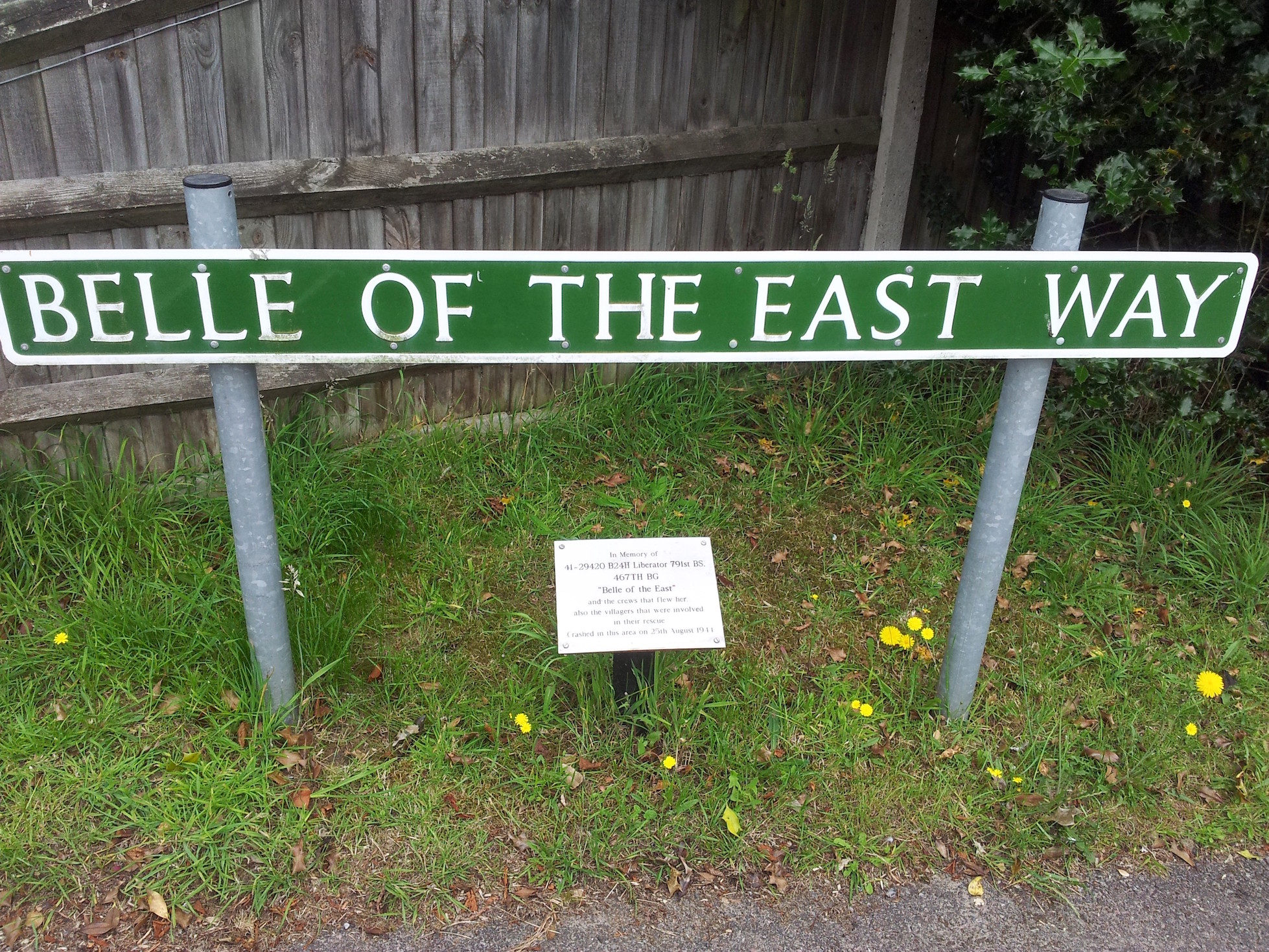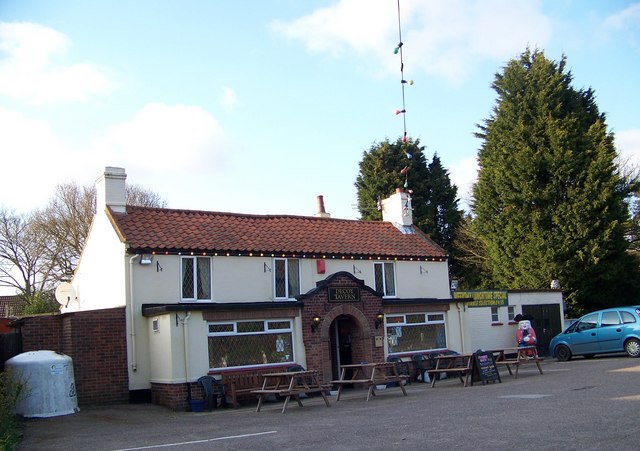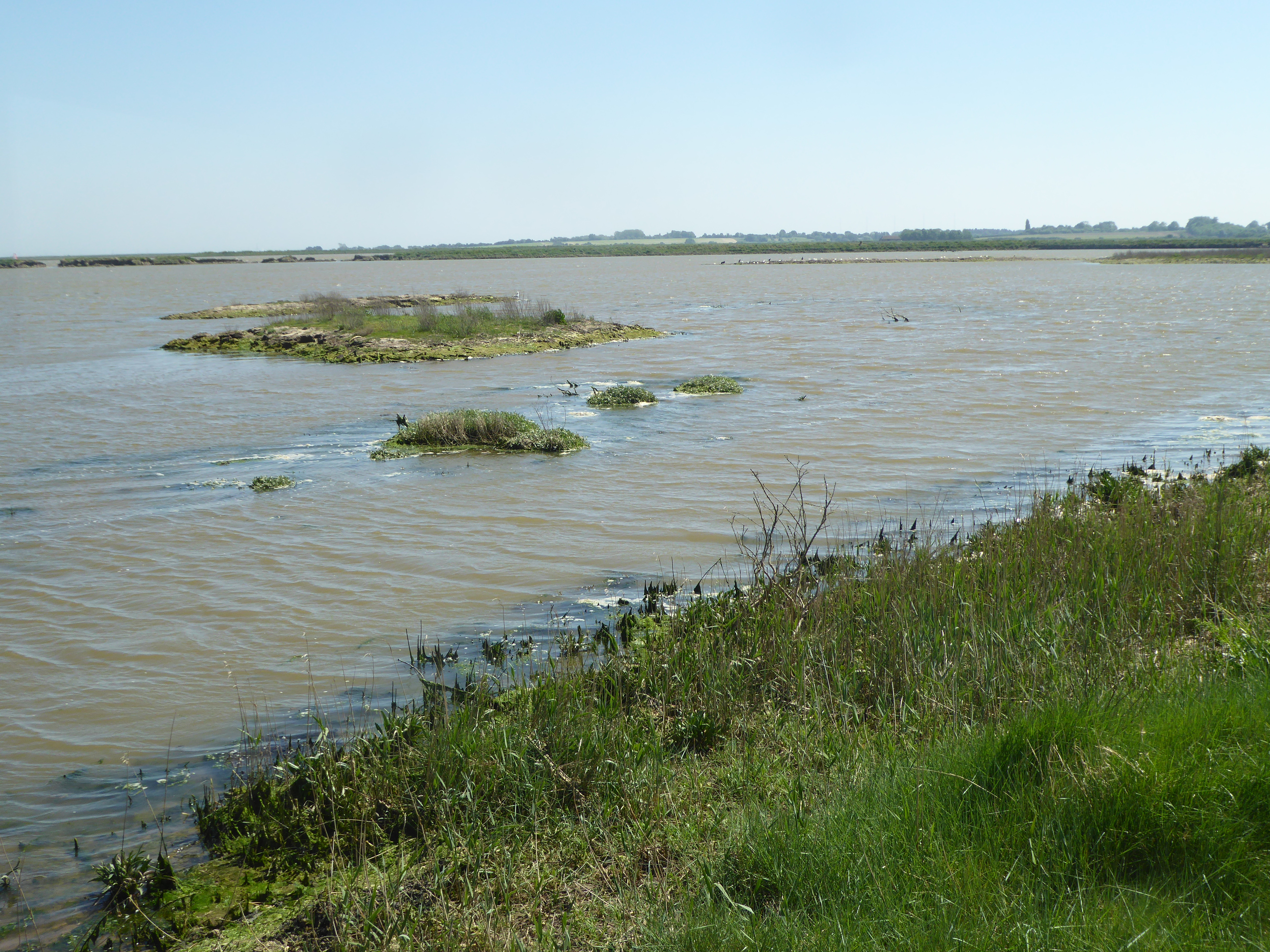|
Lound Lakes
Lound Lakes is a nature reserve and series of reservoirs on the border between the English counties of Norfolk and Suffolk. It is south-west of Gorleston-on-Sea, north-west of Lowestoft and around inland from the North Sea coast, in the parishes of Belton with Browston, Hopton-on-Sea and Lound. It is owned by Essex and Suffolk Water and managed by the Suffolk Wildlife Trust. The lakes were originally created as a result of peat digging in the medieval period. They consist of a number of reservoirs and feed into Fritton Decoy and then to the River Waveney to the west. They have a catchment area of . The catchment is primarily arable land and this leads to nitrate runoff into the lakes, creating issues for water supply and habitat management.River Waveney, Fritton and Lound Lakes, Essex and Suffolk Water. Retrieved 2014-03-15.Archived 2017-12-10.) Habitats in this site include open water, woodland, grassland, rush pasture and fen meadow. Over 140 bird species have been recorded ... [...More Info...] [...Related Items...] OR: [Wikipedia] [Google] [Baidu] |
Browston Green
Belton with Browston is a civil parish in the English county of Norfolk. Historically part of Suffolk, the parish consists of the villages of Belton and Browston Green, and is situated some 5 miles (8 km) south-west of the town of Great Yarmouth and 6 miles (10 km) north-west of the Suffolk town of Lowestoft. The civil parish has an area of 3.23 square miles (8.36 square km) and in the 2001 census had a population of 4,098 in 1,589 households, the population reducing to 3,805 at the 2011 Census. For the purposes of local government, the parish today falls within the district of Great Yarmouth. However prior to the Local Government Act 1972, the parish was within Lothingland Rural District in Suffolk. It is connected to Yarmouth by bus services 6B and 7 and to Norwich by the X11 service, operated by First Norfolk & Suffolk. History The earliest evidence of human inhabitation is a flint axehead from the Palaeolithic period. The fort at nearby Burgh Castle along with fin ... [...More Info...] [...Related Items...] OR: [Wikipedia] [Google] [Baidu] |
Peat Digging
Peat (), also known as turf (), is an accumulation of partially decayed vegetation or organic matter. It is unique to natural areas called peatlands, bogs, mires, moors, or muskegs. The peatland ecosystem covers and is the most efficient carbon sink on the planet, because peatland plants capture carbon dioxide (CO2) naturally released from the peat, maintaining an equilibrium. In natural peatlands, the "annual rate of biomass production is greater than the rate of decomposition", but it takes "thousands of years for peatlands to develop the deposits of , which is the average depth of the boreal orthernpeatlands", which store around 415 gigatonnes (Gt) of carbon (about 46 times 2019 global CO2 emissions). Globally, peat stores up to 550 Gt of carbon, 42% of all soil carbon, which exceeds the carbon stored in all other vegetation types, including the world's forests, although it covers just 3% of the land's surface. ''Sphagnum'' moss, also called peat moss, is one of the most ... [...More Info...] [...Related Items...] OR: [Wikipedia] [Google] [Baidu] |
Brown Long-eared Bat
The brown long-eared bat or common long-eared bat (''Plecotus auritus'') is a small Eurasian insectivorous bat. It has distinctive ears, long and with a distinctive fold. It is extremely similar to the much rarer grey long-eared bat which was only validated as a distinct species in the 1960s. An adult brown long-eared bat has a body length of 4.5–4.8 cm, a tail of 4.1–4.6 cm, and a forearm length of 4–4.2 cm. The ears are 3.3–3.9 cm in length, and readily distinguish the long-eared bats from most other bat species. They are relatively slow flyers compared to other bat species. Habitat The brown long-eared bat is found throughout Europe, with the exception of Greece, southern Italy and southern Spain. It is found to the east up to the Urals and Caucasus. The UK distribution can be found on the National Biodiversity Network website and can be seehere Brown long-eared bats regularly utilise buildings roosting in undisturbed roof spaces either singly, i ... [...More Info...] [...Related Items...] OR: [Wikipedia] [Google] [Baidu] |
Oystercatcher
The oystercatchers are a group of waders forming the family Haematopodidae, which has a single genus, ''Haematopus''. They are found on coasts worldwide apart from the polar regions and some tropical regions of Africa and South East Asia. The exceptions to this are the Eurasian oystercatcher, the South Island oystercatcher, and the Magellanic oystercatcher, which also breed inland, far inland in some cases. In the past there has been a great deal of confusion as to the species limits, with discrete populations of all black oystercatchers being afforded specific status but pied oystercatchers being considered one single species.Hockey, P (1996). "Family Haematopodidae (Oystercatchers)". In del Hoyo, J.; Elliot, A. & Sargatal, J. (editors). '' Handbook of the Birds of the World''. Volume 3: ''Hoatzin to Auks''. Lynx Edicions. . Taxonomy The genus ''Haematopus'' was introduced in 1758 by the Swedish naturalist Carl Linnaeus in 1758 in the tenth edition of his '' Systema Naturae'' ... [...More Info...] [...Related Items...] OR: [Wikipedia] [Google] [Baidu] |
Gadwall
The gadwall (''Mareca strepera'') is a common and widespread dabbling duck in the family Anatidae. Taxonomy The gadwall was first described by Carl Linnaeus in his landmark 1758 10th edition of ''Systema Naturae''. DNA studies have shown that it is a sister species with the falcated duck; the two are closely related to the three species of wigeons, and all of them have been assigned to the genus ''Mareca''. There are two subspecies: * ''M. s. strepera'', the common gadwall, described by Linnaeus, is the nominate subspecies. * ''M. s. couesi'', Coues's gadwall, extinct 1874, was formerly found only on Teraina, a coral atoll in the Pacific Ocean. The specific name ''strepera'' is Late Latin for "noisy". The etymology of the word ''gadwall'' is not known, but the name has been in use since 1666. Description The gadwall is long with a wingspan. The male is slightly larger than the female, weighing on average against her . The breeding male is patterned grey, with a black re ... [...More Info...] [...Related Items...] OR: [Wikipedia] [Google] [Baidu] |
Reed Warbler
The ''Acrocephalus'' warblers are small, insectivorous passerine birds belonging to the genus ''Acrocephalus''. Formerly in the paraphyletic Old World warbler assemblage, they are now separated as the namesake of the marsh and tree warbler family Acrocephalidae. They are sometimes called marsh warblers or reed warblers, but this invites confusion with marsh warbler and reed warbler proper, especially in North America, where it is common to use lower case for bird species. These are rather drab brownish warblers usually associated with marshes or other wetlands. Some are streaked, others plain. Many species breeding in temperate regions are migratory. This genus has heavily diversified into many species throughout islands across the tropical Pacific. This in turn has led to many of the resulting insular endemic species to become endangered. Several of these species (including all but one of the species endemic to the Marianas and two endemic to French Polynesia) have already gon ... [...More Info...] [...Related Items...] OR: [Wikipedia] [Google] [Baidu] |
Duck
Duck is the common name for numerous species of waterfowl in the family Anatidae. Ducks are generally smaller and shorter-necked than swans and geese, which are members of the same family. Divided among several subfamilies, they are a form taxon; they do not represent a monophyletic group (the group of all descendants of a single common ancestral species), since swans and geese are not considered ducks. Ducks are mostly aquatic birds, and may be found in both fresh water and sea water. Ducks are sometimes confused with several types of unrelated water birds with similar forms, such as loons or divers, grebes, gallinules and coots. Etymology The word ''duck'' comes from Old English 'diver', a derivative of the verb 'to duck, bend down low as if to get under something, or dive', because of the way many species in the dabbling duck group feed by upending; compare with Dutch and German 'to dive'. This word replaced Old English / 'duck', possibly to avoid confusion with ... [...More Info...] [...Related Items...] OR: [Wikipedia] [Google] [Baidu] |
Geese
A goose (plural, : geese) is a bird of any of several waterfowl species in the family (biology), family Anatidae. This group comprises the genera ''Anser (bird), Anser'' (the grey geese and white geese) and ''Branta'' (the black geese). Some other birds, mostly related to the shelducks, have "goose" as part of their names. More distantly related members of the family Anatidae are swans, most of which are larger than true geese, and ducks, which are smaller. The term "goose" may refer to either a male or female bird, but when paired with "gander", refers specifically to a female one (the latter referring to a male). Young birds before fledging are called goslings. The List of collective nouns, collective noun for a group of geese on the ground is a gaggle; when in flight, they are called a skein, a team, or a wedge; when flying close together, they are called a plump. Etymology The word "goose" is a direct descendant of,''*ghans-''. In Germanic languages, the root gave Old E ... [...More Info...] [...Related Items...] OR: [Wikipedia] [Google] [Baidu] |
Falco Subbuteo
The Eurasian hobby (''Falco subbuteo'') or just hobby, is a small, slim falcon. It belongs to a rather close-knit group of similar falcons often considered a subgenus '' Hypotriorchis''. Taxonomy and systematics The first formal description of the Eurasian hobby was by the Swedish naturalist Carl Linnaeus in 1758 in the tenth edition of his ''Systema Naturae'' under the present binomial name ''Falco subbuteo''. The genus name ''falco'' derives from Late Latin ''falx'', ''falcis'', a sickle, referring to the wing profile of the bird. The species name ''subbuteo'' is from Latin ''sub'', "below, less than, under" and ''buteo'', "buzzard". The species' English name comes from Old French ''hobé'' or ''hobet''. It became the trademark for the Subbuteo games company after its creator, who was an ornithologist, was refused permission to register "Hobby". Currently two subspecies are recognized: * ''F. s. subbuteo'': the nominate race is resident in Africa, Europe and Central and East ... [...More Info...] [...Related Items...] OR: [Wikipedia] [Google] [Baidu] |
River Waveney
The River Waveney is a river which forms the boundary between Suffolk and Norfolk, England, for much of its length within The Broads. The "ey" part of the name means "river" thus the name is tautological. Course The source of the River Waveney is a ditch on the east side of the B1113 road between the villages of Redgrave, Suffolk and South Lopham, Norfolk. The ditch on the other side of the road is the source of the River Little Ouse which continues the county boundary and, via the Great Ouse, reaches the sea at King's Lynn. It is thus claimed that during periods of heavy rainfall Norfolk can be considered to be an island. The explanation of this oddity is that the valley in which the rivers rise was formed not by these rivers, but by water spilling from the periglacial lake known as Lake Fenland. This was a periglacial lake of the Devensian glacial period, fifteen or twenty thousand years ago. The ice sheet closed the natural drainage from the Vale of Pickering, the Humber a ... [...More Info...] [...Related Items...] OR: [Wikipedia] [Google] [Baidu] |
Fritton Lake
Fritton Lake or Fritton Decoy is a lake on the border of the English counties of Norfolk and Suffolk close to the towns of Lowestoft and Great Yarmouth. It is located within the parishes of Fritton and St Olaves and Somerleyton, Ashby and Herringfleet. A private member's club operates on the Fritton side of the lake, owned by the Somerleyton Estate.Somerleyton.co.uk , Fritton Lake Activities in Suffolk, UK website of the owning group, related to Lord Somerleyton seated at nearby . |
Suffolk Wildlife Trust
Suffolk Wildlife Trust (SWT) describes itself as the county's "nature charity – the only organisation dedicated wholly to safeguarding Suffolk's wildlife and countryside." It is a registered charity, and its headquarters is at Brooke House in Ashbocking, near Ipswich. It was founded in 1961,About us , Suffolk Wildlife Trust. Retrieved 3 March 2014. and is one of 46 covering the . As of March 2017, it has 13,200 members, and it manages of land in 60 nature reserves, most of whi ... [...More Info...] [...Related Items...] OR: [Wikipedia] [Google] [Baidu] |

.jpg)
.jpg)
_female_and_male_dabbling.jpg)


.jpg)

